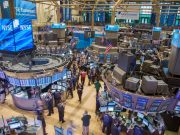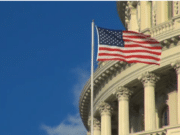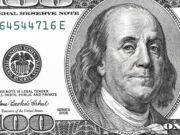In the winter of 1871, a Yale economics professor named Irving Fisher made a discovery that would haunt investors for the next 154 years.
He was studying market panics. The crash of 1869. The banking crisis that followed. And he noticed something extraordinary: Every time the market reached a certain valuation level – every single time – disaster followed within three years.
Fisher went on to become America’s most celebrated economist. Until 1929, when he made the most infamous prediction in financial history. Just days before the Great Crash, he declared that stocks had reached “a permanently high plateau.”
He lost his entire fortune. His reputation. Everything.
But here’s the irony: If Fisher had simply followed his own 1871 research – if he’d looked at the valuation metric that bears his student Robert Shiller’s name today – he would have seen the crash coming from a mile away.
That same metric is screaming a warning today. Louder than it has in 25 years.
And almost nobody is listening.
The $60 Trillion Time Bomb Nobody Wants to Discuss
Let me show you something that will make your blood run cold.
Related: The Most Terrifying Bull Market in History…
The Shiller P/E ratio – that same valuation tool that could have saved Irving Fisher – just hit 41.20.
In the entire 154-year history of the American stock market, it’s only been higher once. December 1999. Three months before the dot-com crash vaporized $5 trillion in wealth.
Think about that. We have 1,848 months of market history. Data going back to when Ulysses S. Grant was president. When the telephone hadn’t been invented. When Standard Oil was just getting started.
And in all that time – through two World Wars, the Great Depression, thirteen recessions, countless panics and crashes – the market has only been more expensive for 22 months. Total.
We’re in the 99th percentile of market insanity. And Wall Street is telling you to keep buying.
The Six Horsemen of the Financial Apocalypse
Here’s what should terrify you: This isn’t the first time we’ve crossed into the danger zone.
Related: 2 Nobel Prize winners warn of once-in-a-generation wealth shift…
Since 1871, the Shiller P/E has exceeded 30 and stayed there for at least two months exactly six times. Including right now.
Let me tell you what happened the previous five times:
1929: Shiller P/E hit 32.6. The Dow subsequently crashed 89%. EIGHTY-NINE PERCENT.
1997: Shiller P/E crossed 30. The market eventually fell 49%.
2000: Shiller P/E peaked at 44.19. The Nasdaq crashed 78%.
2018: Shiller P/E touched 33.3. The S&P 500 dropped 20% in three months.
2022: Shiller P/E hit 38.6. The market fell 25% before the Fed panicked.
And now, 2025: Shiller P/E at 41.20. Higher than all but one of these disasters.
Do you see the pattern? Every. Single. Time. No exceptions. No “soft landings.” No miraculous saves.
When valuations reach these levels, the market doesn’t correct. It collapses.
Why This Time Is Actually WORSE Than 1999
“But Tom,” you’re thinking, “we have AI now. We have quantum computing. This time is different.”
You’re right. It IS different. It’s worse.
Editor’s Note: Bill Gates sold 500,000 shares of Microsoft. Jeff Bezos filed to sell Amazon shares worth $4.8 billion. Warren Buffett just liquidated billions of shares. What is going on? It’s something we haven’t seen for more than a century… [Full Story]
In 1999, at least the internet revolution was real. Amazon went from $100 to $3,000. Google created a trillion-dollar business. The technology actually worked.
Today? We’re pricing in science fiction.
AI companies with zero revenue are worth billions. Quantum computing companies that won’t have commercial products for a decade are trading at 100 times sales. The entire market is priced for a future that may never arrive.
But here’s the real problem – and it’s something nobody on Wall Street will tell you:
The average Shiller P/E since 1871 is 17.29. We’re at 41.20. To get back to the historical average, the market would have to fall 58%.
FIFTY-EIGHT PERCENT.
That’s not a correction. That’s not a bear market. That’s a generational wealth destruction event.
The Beautiful Lie Wall Street Is Selling
Here’s where it gets really insulting.
Wall Street analysts – the same clowns who told you to buy Lehman Brothers at $60 – are now saying the S&P 500 will hit 7,560 next year. That’s an 11% gain from here.
They’re literally telling you to buy the most expensive market in 154 years and expect double-digit returns.
It’s not just wrong. It’s criminal.
They point to Fed rate cuts. As if cheap money can suspend the laws of mathematics.
They talk about AI productivity gains. As if technology can eliminate the business cycle.
They cite “strong earnings.” While conveniently ignoring that profit margins are at all-time highs and about to mean-revert.
But my favorite is when they say “valuations don’t matter in the short term.”
Tell that to investors in 1929. Or 2000. Or 2008. Valuations ALWAYS matter. Eventually.
The Crestmont Research Trap
Now, the optimists will tell you about the Crestmont Research study. How every 20-year period since 1900 has been positive. How patient investors always win.
And they’re right. Sort of.
But here’s what they don’t tell you: That study includes dividends. And more importantly, it includes periods that started AFTER crashes.
If you invested in 1932, after the market fell 89%, of course you made money over 20 years.
If you invested in 2009, after the market fell 57%, of course you did well.
But if you invest TODAY, at the second-highest valuation in history? Good luck.
The math is brutal. To generate even a 5% annual return from these levels, earnings would have to grow at 15% annually for a decade. That’s never happened. Ever.
The Clock Has Already Started Ticking
Here’s what’s going to happen. And I’m not guessing. I’m looking at 154 years of irrefutable data.
First, the catalyst. It doesn’t matter what it is. Maybe it’s AI companies missing revenue projections. Maybe it’s a credit event. Maybe it’s geopolitical. The trigger is irrelevant.
Second, the unwind begins. The magnificent seven lose 50% of their value. The S&P 500 breaks below 5,000. Then 4,000. Panic sets in.
Third, the Fed intervenes. They cut rates to zero. Start QE5. Maybe even buy stocks directly. But it won’t work. Because the problem isn’t liquidity. It’s valuation.
Fourth, capitulation. The market finds its natural level. Somewhere between 20% and 50% lower. Retirements are destroyed. 401(k)s become 201(k)s. A generation of wealth vanishes.
This isn’t fear-mongering. This is mathematics. This is history. This is inevitable.
Editor’s Note: One of the biggest stock market events in 25 years is rapidly unfolding… The economist who predicted the 2008 Financial Crisis says it will be: “The Biggest Crash of Our Lifetime.” Cutting the entire tech market by HALF – virtually overnight. This is why the world’s financial elite are panic-selling stocks at the fastest rate in a decade. [Full Story…]
Your Last Chance to Act
I know this is hard to hear. I know you want to believe this time is different. That the Fed has our backs. That AI changes everything. That stocks only go up.
But feelings don’t matter. Data does. And the data is screaming.
The Shiller P/E has been back-tested to 1871. That’s 154 years. 1,848 months. Dozens of cycles. Hundreds of crashes and rallies.
And it’s telling us, with 99% certainty, that this market is doomed.
You have two choices:
- Trust Wall Street. Keep buying at the second-highest valuations in history. Hope that this time really is different. Pray that 154 years of market history is suddenly wrong.
- Trust the data. Get defensive. Raise cash. Buy protection. Prepare for the opportunity that always follows disaster.
I can’t make this decision for you. But I can tell you what I’m doing: I’m selling everything that isn’t nailed down. I’m buying puts. I’m hoarding cash. And I’m preparing for the buying opportunity of a lifetime.
Because after this bubble bursts – and it will burst – we’ll see valuations not seen since 2009. Maybe even 2003. And those who have cash will become fabulously wealthy.
But those who stay fully invested? Those who trust Wall Street’s lies? They’re about to learn the same lesson investors learned in 1871, 1929, 2000, and 2008:
Trees don’t grow to the sky. Valuations always matter. And history always wins.
Good investing,
Tom Anderson
Editor, Wall Street Watchdogs
P.S. There’s one more data point I haven’t mentioned. Warren Buffett’s Berkshire Hathaway is sitting on $276 billion in cash. The most in history. Buffett didn’t become the world’s greatest investor by buying at peak valuations. He became rich by having cash when others had none. By buying when others were selling. By being greedy when others were fearful. Right now, Buffett is more fearful than he’s been in 50 years. What does that tell you?
P.P.S. Irving Fisher died broke in 1947, never recovering from his 1929 losses. But his research lived on through his student, Robert Shiller, who won the Nobel Prize for the P/E ratio that bears his name. That same ratio is now flashing the brightest warning signal in a quarter-century. The question isn’t whether you’ll listen. The question is whether you’ll act before it’s too late.
Related: If You Keep Cash In A U.S. Bank Account… Watch This NOW
Disclaimer: This article is for informational purposes only and should not be considered personalized investment advice. Past performance does not guarantee future results. Please conduct your own research before making investment decisions.











